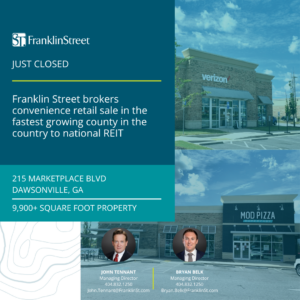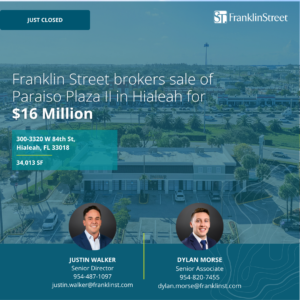Without a doubt, the outlook for the retail real estate market for 2017 is one of optimism based on market fundamentals and a stable economy in most major cities throughout the U.S. A lack of available space on the market is driving vacancy down and rental rates up, and delivery of new developments is anticipated throughout the country.
Generally speaking, rents in the most sought-after real estate submarkets are expected to continue to grow since retailers are competing for the best properties in class-A locations. Nationally, average quoted asking rental rates ended the third quarter at $15.66 per sq. ft., compared with $15.24 per sq. ft. at the end of 2015.
We are experiencing a shift in the market as retailers continue to seek out mixed-use developments, urban high-street retail and lifestyle centers as the preferred property type for new locations. In fact, I believe mixed-use properties in urban core markets will eventually take the place of current big-box stores in most major metros across the country.
With retailers like grocers and quick-serve restaurants targeting 2017 as a potentially huge year for growth, vacancy in these markets may trend downward below 5.0 percent, and national vacancy is expected to continue to decrease as well. The national vacancy rate last year began at 5.4 percent in the first quarter before dropping to 5.0 percent by the end of the third quarter. However, we believe department store closings and downsizings will continue.
As a result of the lack of available space, new development that’s either entirely retail or has a large retail component has picked up in major markets like Dallas, Houston, Northern New Jersey, Atlanta, Long Island, Philadelphia, Miami-Dade, Denver and New York City, all of which are expected to have several new deliveries in 2017.
Although we have recently seen Treasuries spike and the cost of capital increase post-election, we expect to see a continued focus on new urban core developments announced, with deliveries well into 2017. A total of 1,146 retail buildings were delivered in the third quarter of 2016, with more than 79 million sq. ft. still under- construction at the end of the quarter.
Another sign of the market’s success is cap rates, which averaged 7.08 percent compared to the same period of 2015, when they averaged 7.19 percent. In large markets like Las Vegas, San Francisco, Dallas and Miami-Dade, cap rates will continue to remain compressed next year for urban core, mixed-use assets with credit quality tenants, even with a continued increase in the cost of capital. For example, the largest sale last year was the 1.9 million-sq.-ft. Fashion Show in Las Vegas, which sold for $1.25 billion and fetched a 3.9 percent cap rate.
On a whole, all signs point to a very positive year for the retail market, and we are excited to see what 2017 brings.
Robert Granda is a director for Franklin Street. focusing on the acquisition and disposition of both multi-tenant and single-tenant retail properties and provides advisory services to both private and institutional clients throughout South Florida.



